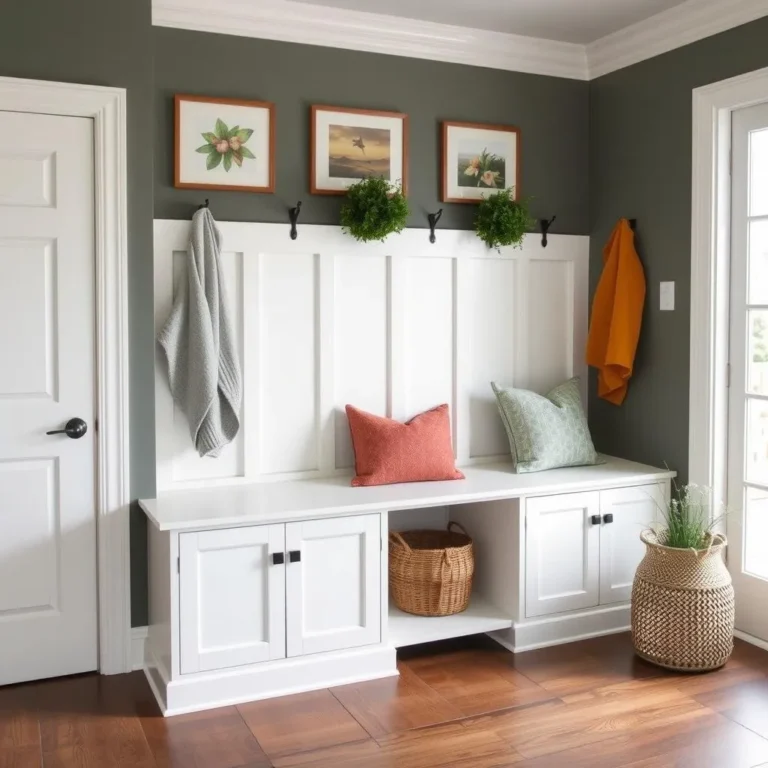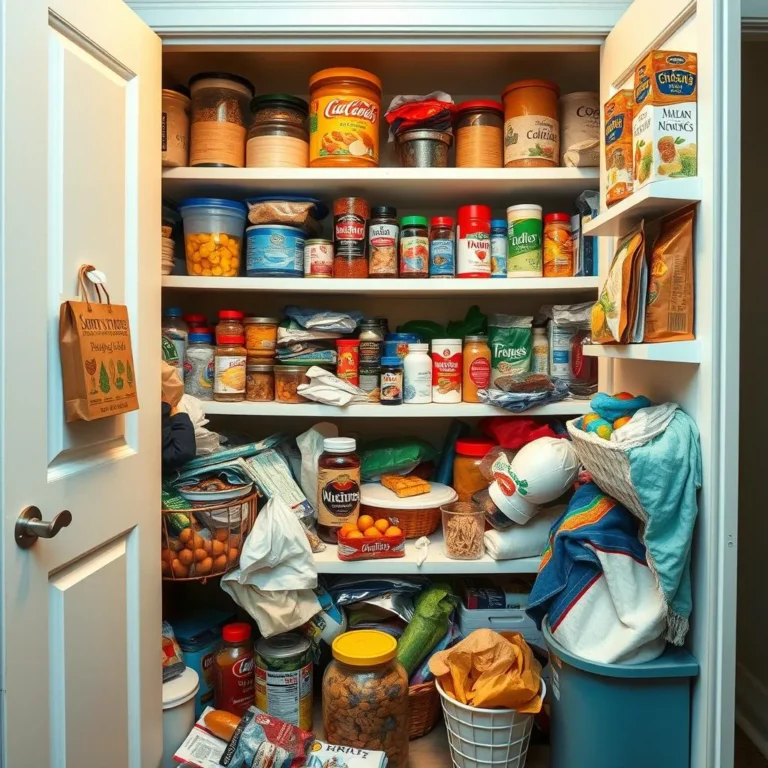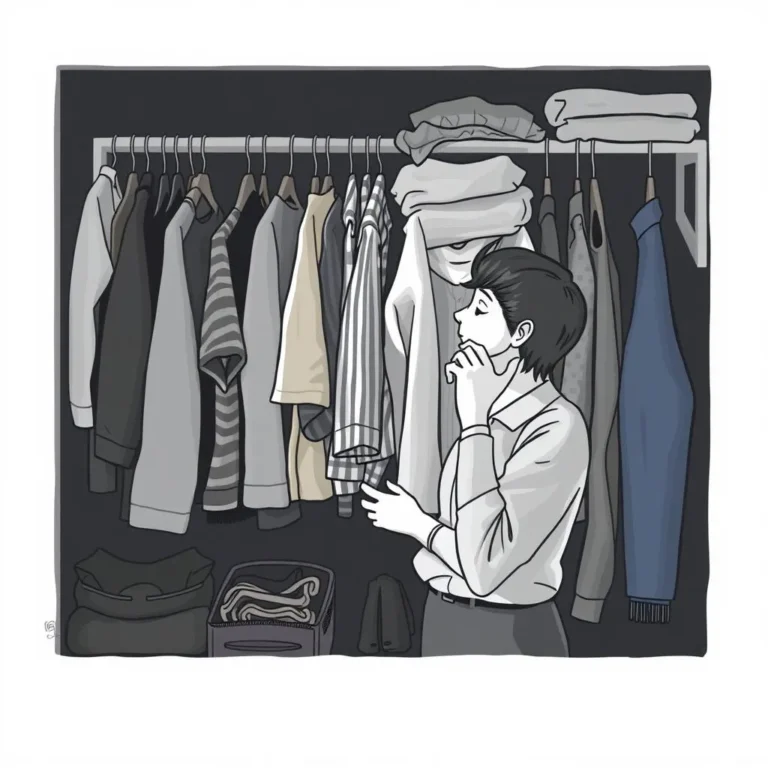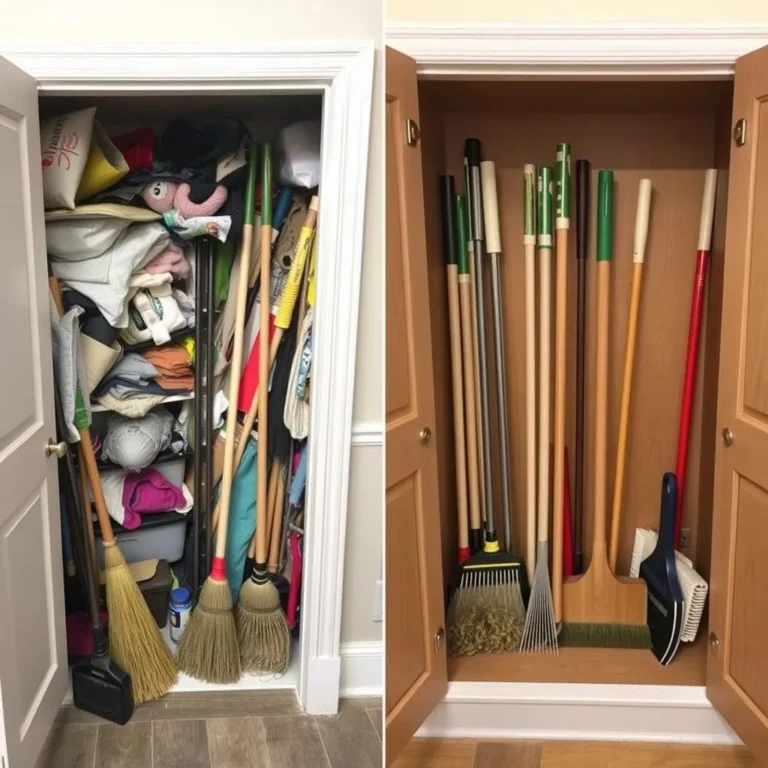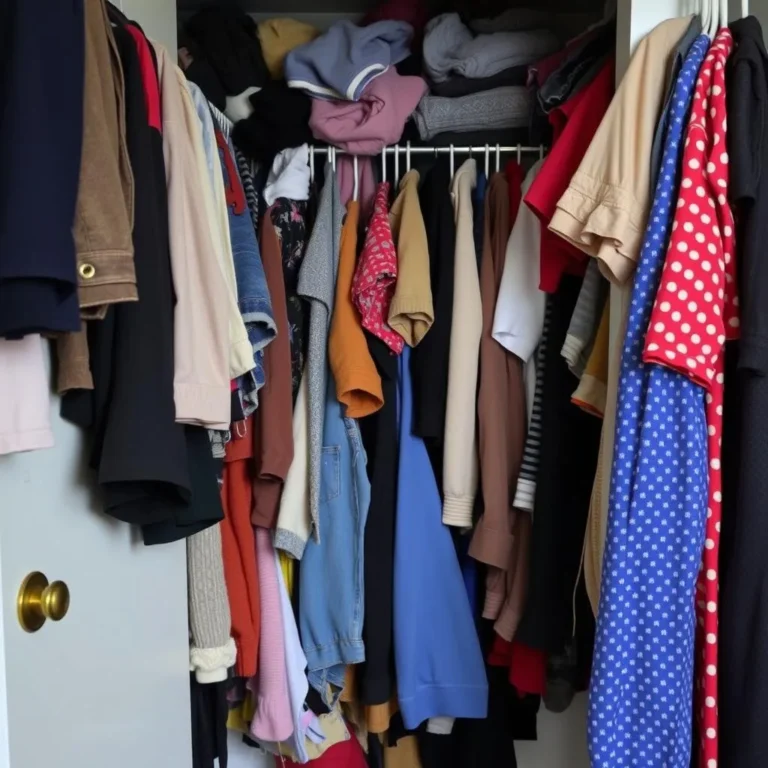Table of Contents
1. The Overwhelming Closet Conundrum
1.1 The Emotional Toll of a Messy Closet
1.2 Why Closet Organization Matters
2. Before You Begin: The Prep Work
2.1 Gather Your Supplies
2.2 Clear the Decks: Emptying Your Closet
3. The Purge: Saying Goodbye to Unwanted Items
3.1 The One-Year Rule: A Simple Decluttering Technique
3.2 Categorizing Your Clothes: Shirts, Pants, Dresses, etc.
3.3 Dealing with Sentimental Items
4. Efficient Closet Organization Techniques
4.1 Folding vs. Hanging: The Great Debate
4.2 Utilizing Vertical Space: Shelves and Drawers
4.3 Clever Storage Solutions: Bins, Baskets, and Organizers
5. Categorization and Placement Strategies
5.1 Color-Coding for a Visually Appealing Closet
5.2 Seasonal Organization: Making the Most of Space
6. Maintaining Your Organized Closet: The Long Game
6.1 The “One In, One Out” Rule
6.2 Regular Closet Audits: Staying on Top of Things
7. Beyond Clothes: Organizing Shoes and Accessories
7.1 Shoe Storage Solutions: From Simple to Sophisticated
7.2 Organizing Accessories: Jewelry, Belts, Scarves
8. Creating a Functional and Stylish Closet
8.1 Lighting Up Your Closet: Enhancing Visibility
8.2 Accessorizing Your Closet: Adding Personal Touches
9. Small Closet Solutions: Maximizing Limited Space
9.1 Space-Saving Hangers and Organizers
9.2 Vertical Space Maximization for Small Closets
10. Closet Organization on a Budget: DIY Solutions
10.1 Repurposing Household Items for Organization
10.2 Affordable Storage Solutions from Discount Stores
11. Professional Closet Organizers: When to Call in the Experts
12. Technology and Closet Organization: Apps and Tools
13. The Psychology of a Tidy Closet: Impact on Well-being
14. Common Closet Organization Mistakes to Avoid
15. Conclusion: Embrace the Organized Life
FAQs
Organize My Closet: A Step-by-Step Guide to a Tidy Sanctuary
1. The Overwhelming Closet Conundrum
Let’s be honest, staring into a chaotic closet can feel like facing a monster. Clothes spill out, shelves overflow, and the sheer volume of stuff can be paralyzing. But what if I told you conquering your closet chaos is easier than you think? This guide will walk you through every step, from the initial purge to maintaining your newly organized haven.
1.1 The Emotional Toll of a Messy Closet
A messy closet isn’t just an eyesore; it can impact your mental well-being. That feeling of overwhelm can seep into other areas of your life, contributing to stress and anxiety. A disorganized closet often reflects a disorganized mind—and who wants that?
1.2 Why Closet Organization Matters
Think of your closet as more than just storage; it’s a reflection of yourself. An organized closet saves you time searching for clothes each morning, reducing stress and making you feel more put together. Plus, it simply feels good to have a space that is aesthetically pleasing and functional.
2. Before You Begin: The Prep Work
Before you dive into the decluttering, you need to lay the groundwork. This preparatory phase will set the stage for a smooth and efficient organization process.
2.1 Gather Your Supplies
Arm yourself with the right tools! You’ll need garbage bags (for donations and discards), boxes or bins for sorting, measuring tape (for space planning), and any storage solutions you plan to use (more on that later!). 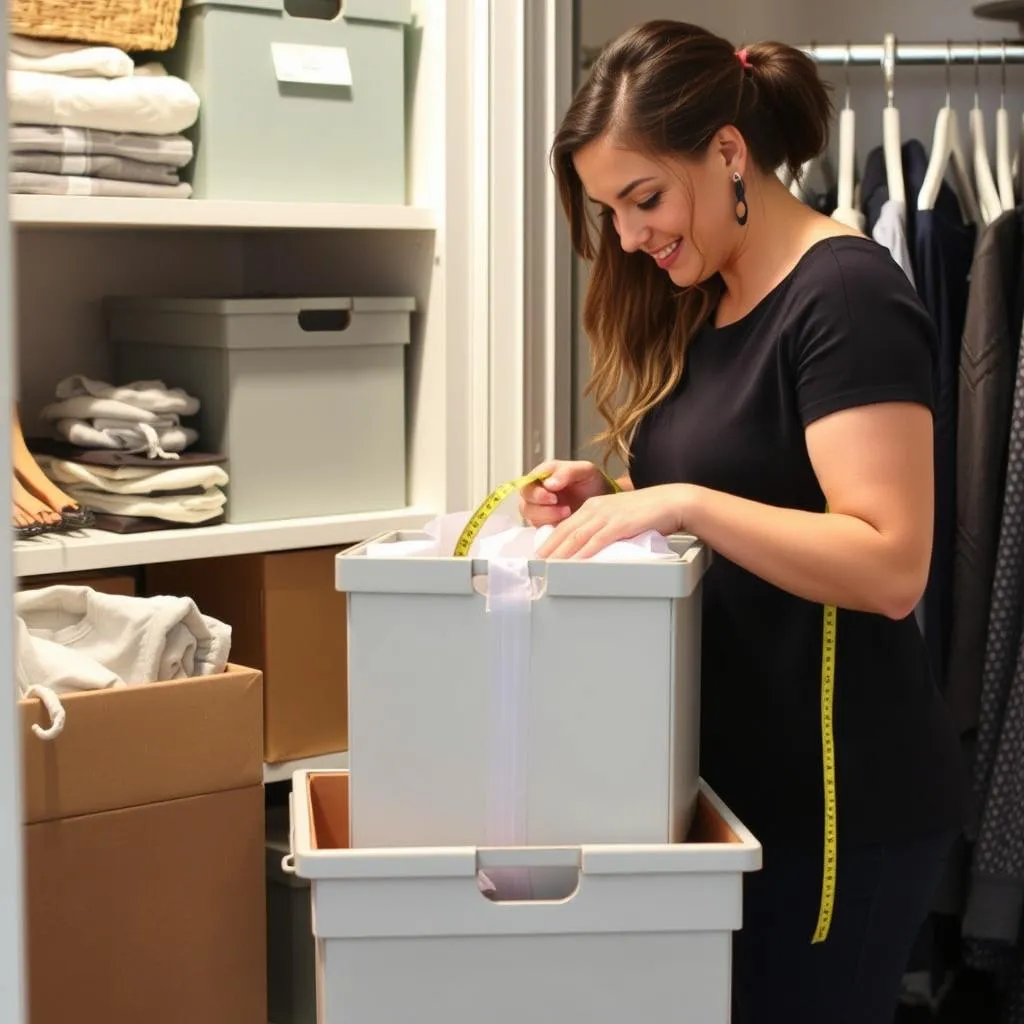
2.2 Clear the Decks: Emptying Your Closet
Completely empty your closet. This might seem daunting, but it’s essential for a proper assessment of what you have and how much space you’re working with. Trust me, this initial step will make the entire process much less overwhelming.
3. The Purge: Saying Goodbye to Unwanted Items
This is where the real work begins – the crucial process of decluttering. Don’t be afraid to be ruthless!
3.1 The One-Year Rule: A Simple Decluttering Technique
A great rule of thumb is the one-year rule: If you haven’t worn something in a year, it’s likely time to let it go. There are exceptions (formal wear, special occasion outfits), but this is a good starting point.
3.2 Categorizing Your Clothes: Shirts, Pants, Dresses, etc.
As you remove items, sort them into categories: shirts, pants, dresses, skirts, jackets, etc. This helps you visualize the volume of each item and aids in later organization.
3.3 Dealing with Sentimental Items
Sentimental items can be the toughest to part with. Consider taking photos of those items to preserve the memories without cluttering your closet.
4. Efficient Closet Organization Techniques
Now that you’ve purged, it’s time to think strategically about how you’ll arrange your remaining clothes.
4.1 Folding vs. Hanging: The Great Debate
The best method depends on the item and your personal preference. Delicate items like blouses and sweaters often look better hung, while jeans and t-shirts might fold more efficiently.
4.2 Utilizing Vertical Space: Shelves and Drawers
Don’t underestimate the power of vertical space! Shelves and drawers allow you to maximize storage and keep items neatly tucked away.
4.3 Clever Storage Solutions: Bins, Baskets, and Organizers
Bins, baskets, and drawer organizers can create order and keep similar items together. This allows for efficient storage and easy retrieval. 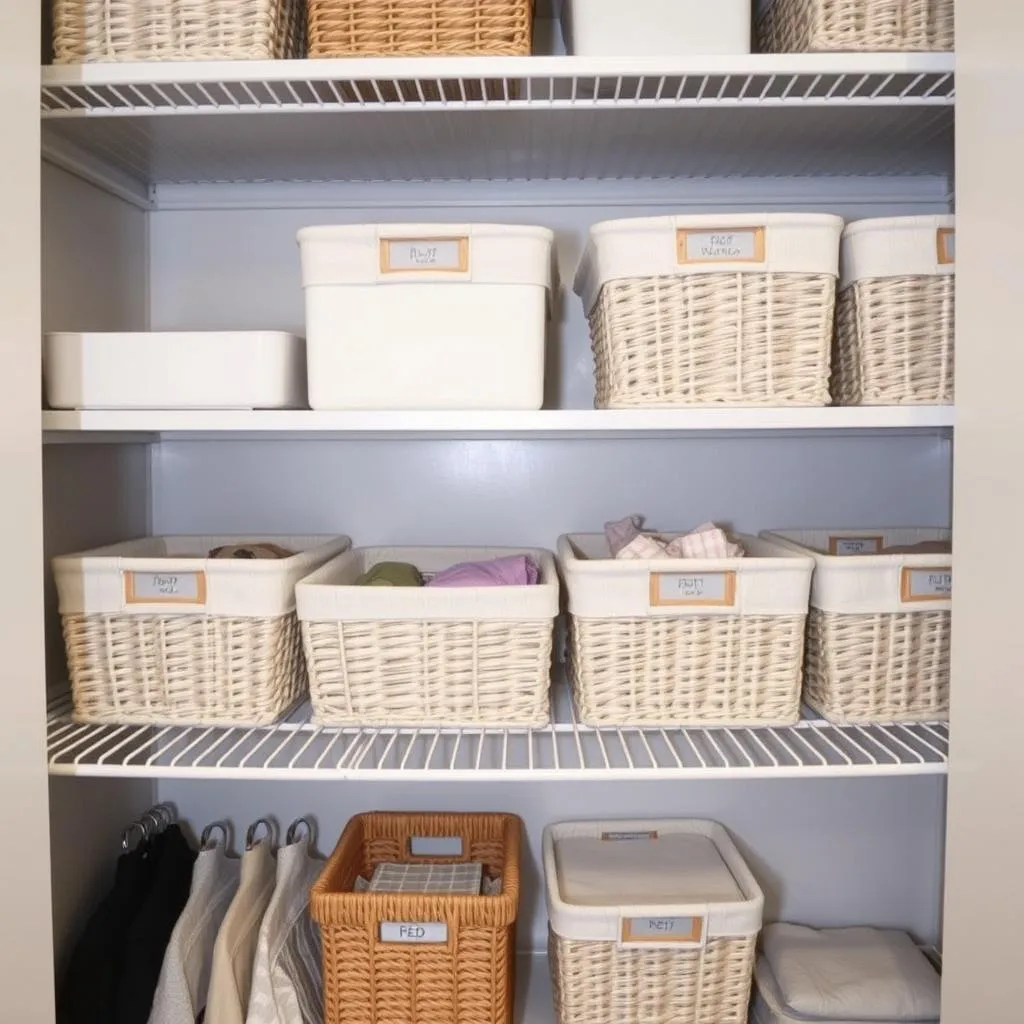
5. Categorization and Placement Strategies
Consider how you’ll arrange your clothes for optimal ease of access and visual appeal.
5.1 Color-Coding for a Visually Appealing Closet
Color-coding your clothes can create a calm and visually satisfying space. It also makes finding specific items faster.
5.2 Seasonal Organization: Making the Most of Space
Store out-of-season clothes in bins or off-site storage to maximize space for current season clothing.
6. Maintaining Your Organized Closet: The Long Game
Organization isn’t a one-time event; it’s an ongoing process.
6.1 The “One In, One Out” Rule
For every new item you bring into your closet, remove one old item. This prevents future clutter buildup.
6.2 Regular Closet Audits: Staying on Top of Things
Schedule regular audits (monthly or quarterly) to assess your closet’s organization and ensure it remains functional.
7. Beyond Clothes: Organizing Shoes and Accessories
Don’t forget about shoes and accessories! These items often get overlooked but significantly impact the overall organization of your closet.
7.1 Shoe Storage Solutions: From Simple to Sophisticated
From simple shoe racks to stylish over-the-door organizers, there are numerous solutions to keep your shoes neat and accessible.
7.2 Organizing Accessories: Jewelry, Belts, Scarves
Utilize drawers, jewelry organizers, and scarf racks to keep accessories from becoming tangled messes. 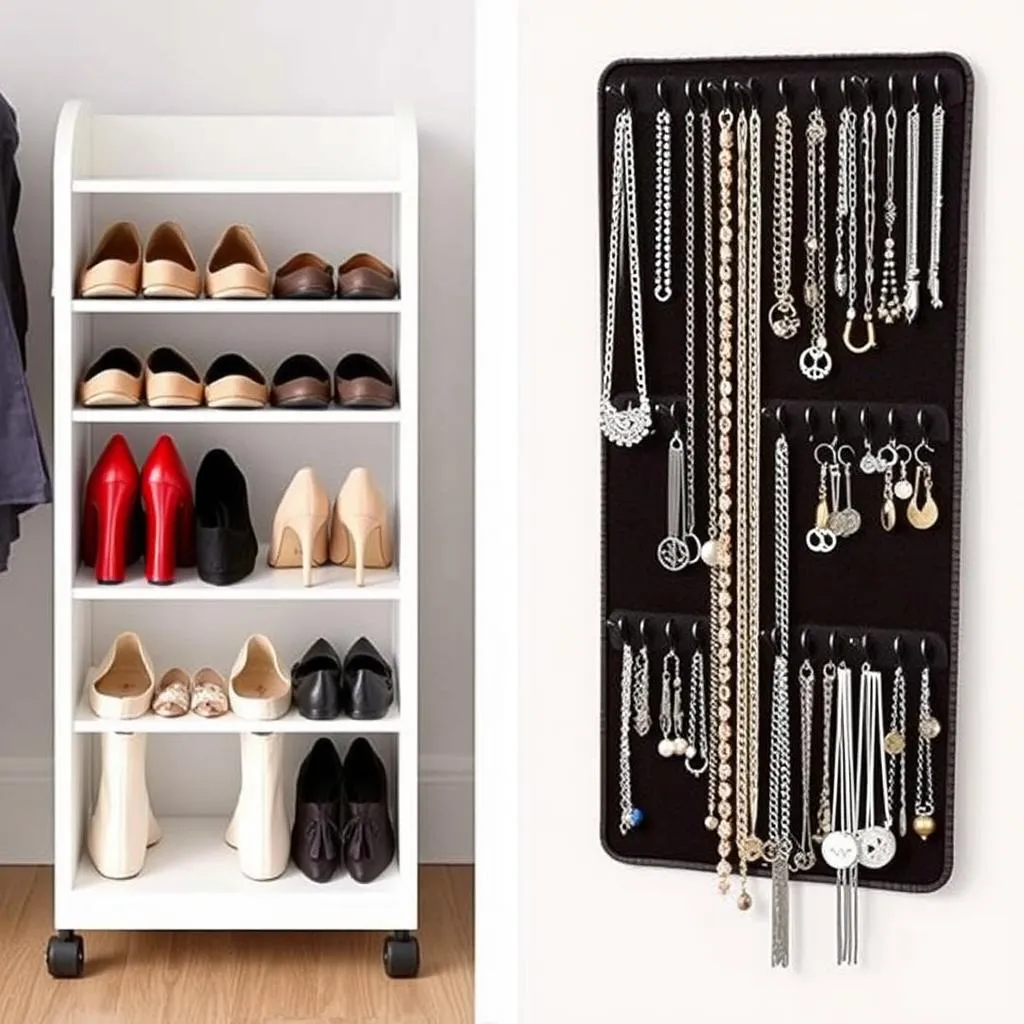
8. Creating a Functional and Stylish Closet
Make your closet a space you enjoy!
8.1 Lighting Up Your Closet: Enhancing Visibility
Proper lighting makes it easier to find items and enhances the overall aesthetic. Consider adding closet lighting or a small lamp.
8.2 Accessorizing Your Closet: Adding Personal Touches
Add decorative touches like wallpaper, paint, or even a small plant to personalize your closet space.
9. Small Closet Solutions: Maximizing Limited Space
Even small closets can be organized efficiently with creative solutions.
9.1 Space-Saving Hangers and Organizers
Slimline hangers and cascading hangers maximize space while keeping clothes wrinkle-free.
9.2 Vertical Space Maximization for Small Closets
Utilize vertical space by installing shelves, hanging organizers, or using stacked storage bins.
10. Closet Organization on a Budget: DIY Solutions
You don’t need to break the bank to organize your closet!
10.1 Repurposing Household Items for Organization
Repurpose empty jars, shoe boxes, or other containers to create inexpensive storage solutions.
10.2 Affordable Storage Solutions from Discount Stores
Discount stores offer a wide range of affordable storage bins, baskets, and organizers.
11. Professional Closet Organizers: When to Call in the Experts
If you’re feeling overwhelmed or lack the time, consider hiring a professional closet organizer.
12. Technology and Closet Organization: Apps and Tools
Several apps can help you track your inventory, plan your closet layout, and more.
13. The Psychology of a Tidy Closet: Impact on Well-being
A tidy closet can positively impact your mental well-being by reducing stress and promoting a sense of calm.
14. Common Closet Organization Mistakes to Avoid
Avoid overcrowding shelves and drawers, failing to purge regularly, and neglecting proper labeling.
15. Conclusion: Embrace the Organized Life
Organizing your closet is an investment in yourself. It’s about creating a space that is functional, aesthetically pleasing, and ultimately contributes to a more peaceful and productive life. Embrace the process, enjoy the results, and savor the feeling of a truly organized closet!
FAQs
1. How often should I purge my closet? Aim for a major purge at least once or twice a year, with smaller cleanups more frequently (quarterly or even monthly).
2. What’s the best way to organize shoes? The best method depends on the space available and the number of shoes you own. Shoe racks, over-the-door organizers, and even clear bins work well.
3. How can I organize my closet without spending a lot of money? Repurpose household items like empty jars, shoe boxes, and fabric bins. Look for affordable storage solutions at discount stores or thrift shops.
4. What if I don’t have much closet space? Utilize vertical space, use slimline hangers, and consider off-site storage for seasonal or infrequently worn items.
5. What if I’m still overwhelmed by the process? Don’t hesitate to ask for help! Enlist a friend or family member, or consider hiring a professional organizer.

